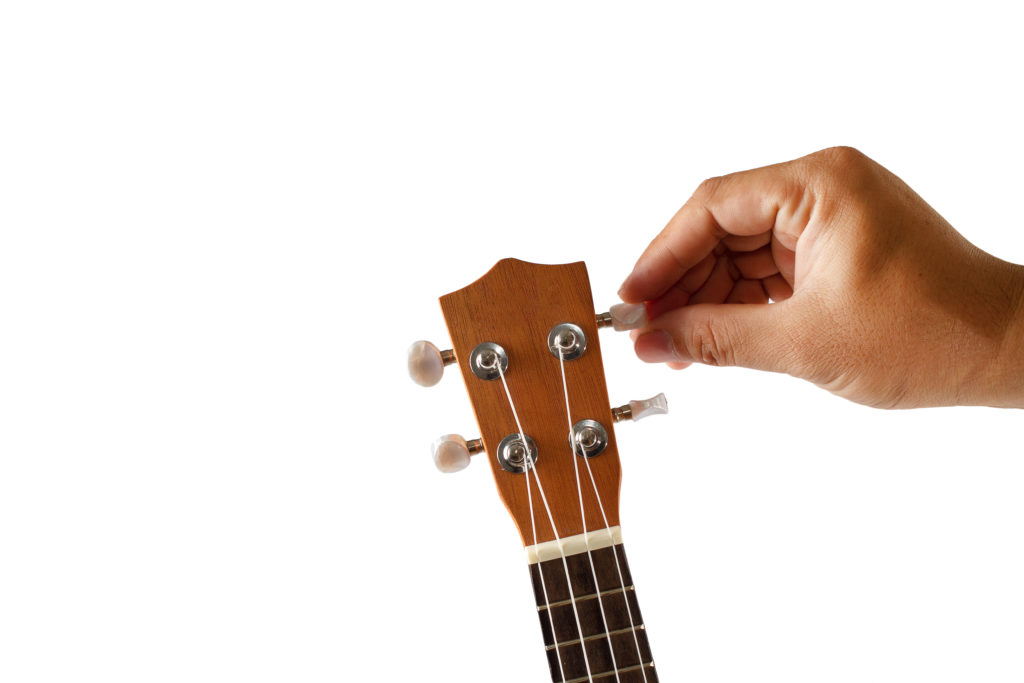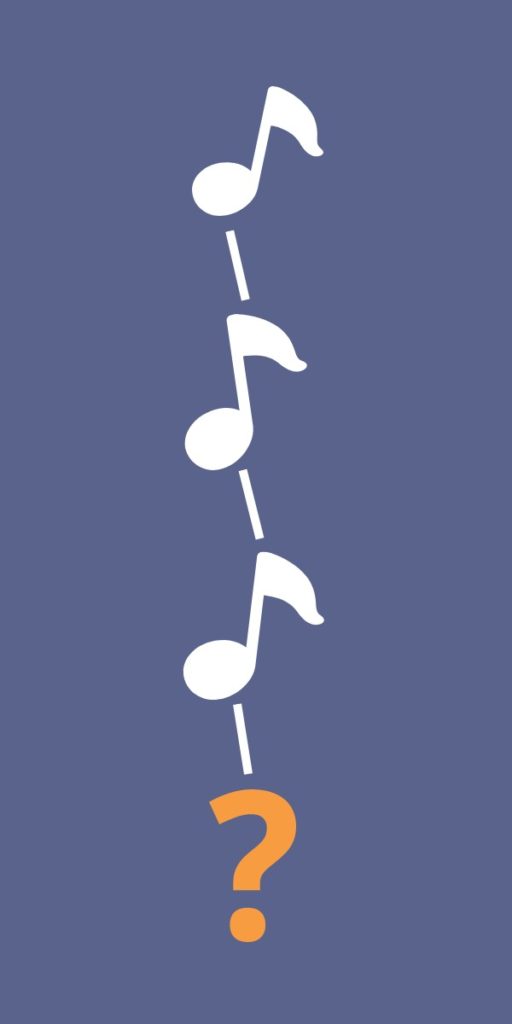When it comes to learning any musical instrument, we’re very quick to bypass training the one thing that can help us better than anything else: our ears.
We use digital tuners that give visual feedback, use chord boxes to learn new chords, and seek out detailed explanations of strumming patterns. The problem here is that by using these techniques we’re able to almost entirely bypass using our ears, which ultimately slows down our ability to learn to play.
When it comes to progress and development, feedback is crucial, and your ears give you the most immediate kind. You can instantly gauge whether you’re playing a piece of music accurately or not. All you need to do is spend some time developing your aural skills – then sit back and let your ears do the work!
Leave The Tuner Alone
 The first thing that I would recommend is to stop using your tuner to get your ukulele in tune. Yes, it’s fast, but it’s a shortcut that robs you of the opportunity to use and develop your ears.
The first thing that I would recommend is to stop using your tuner to get your ukulele in tune. Yes, it’s fast, but it’s a shortcut that robs you of the opportunity to use and develop your ears.
Personally, I try and use a tuning fork. A tuning fork will give you a reference note, but the rest comes down to your ears. If you don’t have a tuning fork, use a reference note from another source – this could be from another ukulele or an online tool that plays you the relevant notes. Ukulele Go! gives some handy tips on how to tune your ukulele using only your ears.
Start With A Familiar Tune
 When it comes to working out songs by ear, I always recommend starting with the same song: Happy Birthday. The reasons for this are pretty obvious – it’s a song that we all know very well, we’ve all heard it many times, and we’ve sung it unaccompanied lots of times too.
When it comes to working out songs by ear, I always recommend starting with the same song: Happy Birthday. The reasons for this are pretty obvious – it’s a song that we all know very well, we’ve all heard it many times, and we’ve sung it unaccompanied lots of times too.
Start with a single note and play it a few times to become familiar with it. Then, work out the next note: is it higher or lower than the previous note? Play the first note again and try to follow it up with the next. You might find this difficult, but it’s a process of elimination. There are a limited number of notes available to you (12 in an octave), and it has to be one of them.
It’s a slow process in the beginning, but you should find that even on a song like Happy Birthday, you will have drastically improved in working it out by ear before the end of the song.
Rinse And Repeat
Once you’ve got Happy Birthday all worked out, it’s time to move on to another song.
Nursery rhymes are good options here. Again, you’ll have a level of familiarity with the songs that will help you out. Repeat your technique from before. Take it a note at a time, and set realistic targets – maybe it’s just four notes a day to begin with, before progressing to trying to get a whole song in a day.
Here Come The Chords
Once you find yourself becoming confident working out melodies by ear, it’s time to move onto chords. Chords bring a new challenge, as they consist of multiple notes played simultaneously. It’s definitely more challenging but still well within reach.
Start out nice and simple. Pick a song with two or three chords in it – that will be plenty to begin with. If you’re just starting out, I’d also recommend looking up what those chords are. Here are a few songs that are a great starting point (plus the chords used in the song):

- La Bamba – Ritchie Valens (C, F, G)
- Sloop John B – The Beach Boys (C, F, G)
- Free Falling – Tom Petty (G, C, D)
- Barbara Ann – The Beach Boys (G, C, D)
- Ring Of Fire – Johnny Cash (G, C, D)
- Love Me Do – The Beatles (G, C, D)
- Cecilia – Simon & Garfunkel (G, C, D)
- All You Need Is Love – The Beatles (G, A, D)
- Sweet Home Alabama – Lynyrd Skynyrd (D, C, G)
- Bad Moon Rising – Creedence Clearwater Revival (D, A, G)
Find a recording of the song and listen to it. But not like you’d normally listen – I want you to focus your listening on the chord changes. When do they happen?
If you really want to get this skill down I’d grab a pen and paper and write the lyrics down. Leave a little room above each line and as you hear the chord changes, put a mark above the lyric that the change occurs over. We’re not looking for the actual chords yet, just the changes.
Once you’ve marked all the changes, the next step is to try and work out the chords. If you’ve started with a song that just contains three chords, it won’t be too difficult. What’s the first chord you hear? Listen again and again. Try playing your chords over the song, one at a time, until you find the right one. Note it down.
The good news is that it gets easier. And, when you think about it, it’s also just a process of elimination. Bob Egan provides a list of three-chord and four-chord songs that you can try to work out, for an extra challenge!
Sticking With It
Because it can be quite slow-going, a lot of people give in when it comes to working songs out by ear alone. When the internet is there in all its glory, it’s very easy to use an app or website to get the information you need. However, this is cheating your own development, and should only be used as a last resort for when your ear is really stumped.
Commit to doing a little bit of playing by ear every day, it’s such an important skill that it’s worth working on it daily. I’ll never forget the first time I played along with a song I’d never heard before: it’s an incredible feeling.
What are you waiting for? Start developing your ears!
The post How To Play Ukulele By Ear appeared first on Musical U.
